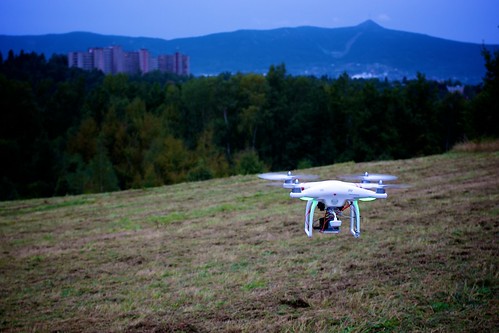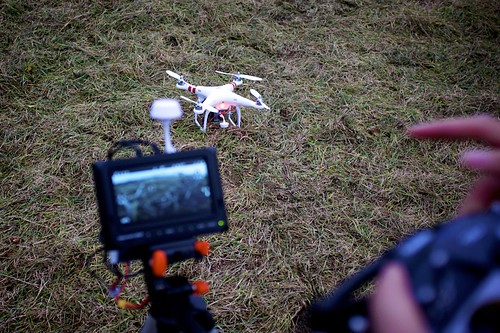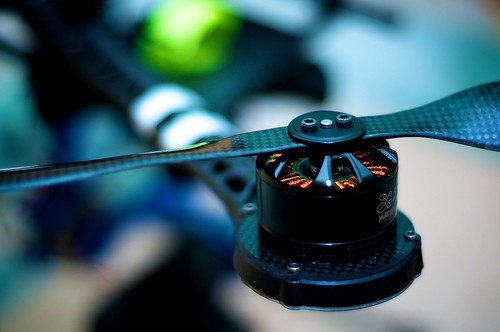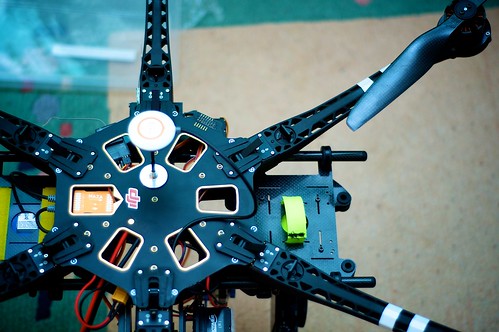Flying Cameras
Nov 26 2013
Some of you may have noticed the tagline on my newly redesigned website. Camera Pilot. Allow me to explain. Before I do that, however, I have to make sure you understand I’m no expert on these things. Even if the devices are amazingly cheap from a historical perspective, you probably want to do your own research before flying your expensive camera. You definitely don’t want to follow my footsteps on tech purchases ;)
Multirotor is another term for ‘drone’ which has a rather negative connotation in the media. It’s a radio controlled helicopter that doesn’t use a single big rotor with a blade that can slice you, but instead has three or more props that allow it to hover and move around. Like many, I was intriqued by the flying toy, Parrot AR Drone but I wanted to know more about the capabilities of the camera. I was absolutely not intersted in flying the thing. I was interested in getting aerial shots.
I bumped into something called DJI Phantom when googling around. I got instantly hooked. My wife can testify I have a disposition for that kind of behavior.
What it essentially is, and what I bought it for, is a flying Gopro camera. The great thing about it is that you really don’t need to have any prior piloting experience. It couldn’t be easier to fly. Not only does it level itself and doesn’t crash immediately, thanks to a GPS module and altitude sensors, it really can stabilize itself in 3d space, fighting elements. If you let go of the controls, it will keep the same altitude and it will try to remain static, despite of its current momentum or wind conditions. It behaves more like a car or boat, rather than something that shares space with birds. You can take a breather. You can answer a phonecall. You can shake hands with the person (or a policeman in case you’re in the US or UK, because inevitably you’ll be looking suspicious there) that came to ask about the cute thing.
Trust me, people will want to chat with you. Normally, nobody ever approaches me, as I maintain my tough guy image. There isn’t a time when somebody doesn’t stop and ask about range, cost and flight time as soon as I take off now. If, for some reason, you lose the connection to the craft (transmitter is part of the package), it is able to come back to the take off location and land itself autonomously as long as it has a GPS lock.
What starts with fun toy, soon turns into a serious slippery slope as you’ll be extending the craft with a video transmitter so you can fly FPV (first person view), looking into an LCD panel or goggles. Flying a few meters away in plain sight is one thing, but once you get a taste of FPV, there’s no going back. If you’re intersted, I suggest listening to this Flite Test podcast episode with an icon of FPV, Raphael Pirker.
When shooting 60 frames per second, the footage can be stabilized in software, but things look a world different if you have the camera mounted on an active gimbal. You can get a perfect gopro gimbal from DJI, it’s going to cost you. They just dropped the price down by almost a half, but it’s still more than $350. If you can survive an extra wire or two and some weight (might actually be worth 1-2 minutes of flight time), you can get a decent alternative. Only today I have received a very well made Tarot 2D gimbal, that does still need the USB link to the gopro instead of the neat backside port, but looks pretty clean and compact otherwise. I’ll give it a spin soon.
Luckily one doesn’t really have to have a single DIY bone in the body to enjoy building quads. It doesn’t require a bigger skillset than building PCs. You probably can’t get away from soldering a wire or two, but apart from that it’s all about connecting components. The only skill is finding cheaper alternatives to the rather pricey (but honestly very well made) DJI counterparts. Big downside is the waiting. Buying parts from chinese vendors on ebay is the closest thing to getting your Christmas presents delivered by a deity. By the time the stuff arrives, you have absolutely no recollection of it and are genuinely surprised. A true Überraschung! Apart from ebay, I usually get components from RCtimer and Hobbyking.
As you’ll be carrying a lot of gear around, carrying cases are quite useful. I ended up using an IKEA plastic box for replacement parts, tripods and stuff that is unlikely to break. Model specific cases are crazy expensive, you can easily spend as much as I did for the kit for just a case for it. Pelican cases are the standard for when you need weather proof rugged travel safety, but they are expensive and very heavy. I went (in a typical fashion) for a clone. Farnell sells a Duratool D00468 that nicely fits the Phantom, batteries and a radio. Unless you lifted the skids to fit a bigger gimbal that is.
I am a big fan of machines with a purpose. Things that don’t resemble a “computer”. For now I have an agile small flying camera (DJI Phantom) and a super stable giant rig serving as an “infinite crane” (RCTimer S800R). I left out my last chopper for some other time as it not only involved most DIY time, the most crashes by far, but also boldly returns to the land of free software and open hardware, which is likely to strike a tone with people reading this. Check back soon!









